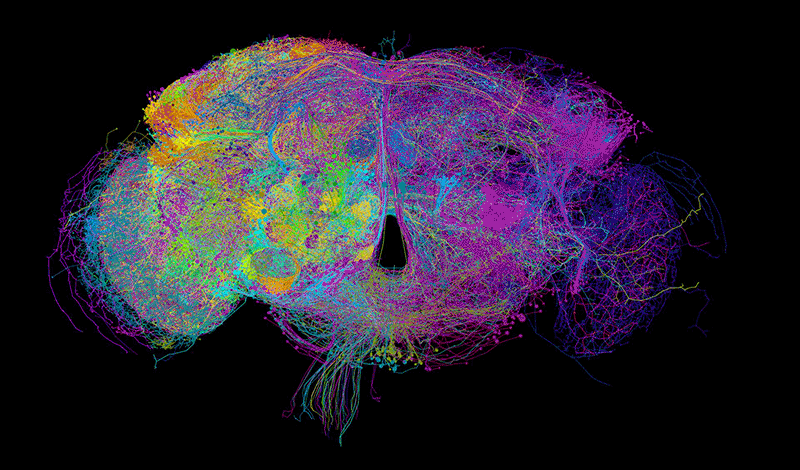Researchers hope the data will speed the understanding of how the brain affects behaviour.

An adult fruit-fly brain in all its glory.Visualization: Philipp Schlegel, Drosophila Connectomics Group, Cambridge
Scientists have produced a 3D image of a fruit fly’s brain that’s so detailed, researchers can trace connections between neurons across the entire organ.
Fruit flies (Drosophila melanogaster) display a suite of complex behaviours, including courtship dances and learning1. But understanding the neural networks that drive these behaviours remains a challenge. The data from this image, published on 19 July in Cell2, resolved the insect’s brain down to individual cells — revealing some neurons that have never been seen before. This offers scientists a new tool with which to study fruit-fly behaviour and allows them to compare the insects’ neural networks with that of other species.
Researchers cut a fly’s brain — roughly the size of a poppy seed — into more than 7,000 slices and shot a beam of electrons through the sample. A high-speed camera captured high-resolution pictures of each slice — a process never used before — generating roughly 21 million images that the team stitched together using custom computer software.
Small brain, big value
A picture with this level of detail is a precious resource, says Tomoko Ohyama, a neurobiologist at McGill University in Montreal, Canada. She acknowledges the difficulty in producing such a huge data set, but also emphasizes that it’s a stepping stone to completely understanding fruit-fly behaviour.
These data will allow researchers to identify all the neurons behind a particular behaviour, says study co-author Davi Bock, a neuroscientist at the Howard Hughes Medical Institute’s Janelia Research Campus in Ashburn, Virginia. He likens the team’s image to a circuit diagram for an electronic device. It’s informative only if you understand all the pieces, he says, and scientists currently understand just a few of them.
Bock and his colleagues have made the data publicly available, providing researchers with the scaffolding they need to construct experiments and fill in some of the gaps.
“I think in the next few years, we’re going to see the arrival of very complete wiring diagrams from this data set and others,” Bock says.
